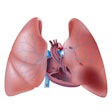Tuesday, November 28 | 11:10 a.m.-11:20 a.m. | SSG07-05 | Room N230B
The RadLex Playbook shows promise for streamlining and improving the monitoring and reporting of radiation dose from CT scans, according to researchers from Stanford University.Radiation dose in CT is a fundamental quality indicator, and establishing national benchmarks is a priority -- as evidenced by national efforts such as the American College of Radiology (ACR) Dose Index Registry, said presenter Dr. Daniel Rubin.
"Most institutions routinely collect dose information, but the way they designate the procedures, anatomic regions scanned, technical parameters used, etc., vary within and across institutions, thwarting the ability to generate reports across devices or to unify data from institutions nationally," Rubin told AuntMinnie.com.
The researchers sought to use the RSNA's RadLex Playbook -- a standard nomenclature for radiology procedures -- to tackle this challenge by unifying the disparate names for CT procedures in different devices at their institution. This would facilitate uniform dose reporting of CT procedures, as well as enable the generation of a variety of reports based on the different granularity of imaging procedures (e.g., dose of all CT of the chest or all pediatric CT exams), Rubin said.
They were indeed able to demonstrate the utility of the RadLex Playbook to unify the disparate radiology procedure names on their different CT scanners, Rubin said.
"Based on our experience, we expect this to generalize to other institutions," he said. "Second, we showed the utility of the RadLex Playbook for enabling querying of dose data to generate reports according to different types of CT procedures. In addition, our work will facilitate the work of national databases such as the ACR dose registry and help to establish national benchmarks on dose."




















